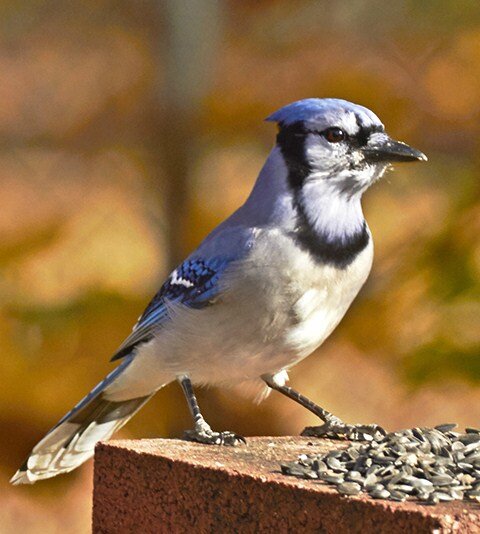Blue Jays, American Chestnuts and The Power of Observation
There was a mystery embedded in the talk given by Bernd Heinrich at the Maine Chapter of the American Chestnut Foundation’s annual meeting this October. He had been observing the behavior of blue jays harvesting nuts from isolated American chestnuts on his property in western Maine. Bernd couldn't see where the blue jays were landing when they flew off above the nearby forest, but later, he noticed American chestnut seedlings coming up in the woods. He began to look for blue jay caches, often leaf covered hollows on the ground. The only problem was that some of the caches he found had as many as 20 nuts. Blue jays do in fact carry food in an expandable throat or “gular” pouch, but they would not be able to carry twenty at a time. And blue jays are not known for making multiple deliveries to an individual cache site.
Benrd Henrich is a well-known author and a professor emeritus in the biology department at the University of Vermont. The author of “The Homing Instinct: Meaning and Mystery in Animal Migration,” as well as “The Trees in My Forest” and “A Year in the Maine Woods,” he has a knack for combining science and good storytelling. But the most powerful thing that Bernd teaches is observation.
There are important implications that can be drawn from Bernd’s above-mentioned study of the jays. While the primary and imminent focus for American chestnut trees is the development of blight resistance, the long term goal is reintroduction of American chestnut trees to the forest. Observations like Bern’s help create an understanding of distribution patterns. And those are the type of observations that we can all make on our own woodlots, whether it be watching blue jays, keeping an eye out for blonding – an indicator of emerald ash borers - noticing how our lots are developing or taking in the changing leaf color year to year. There is so much to notice, when we look carefully.
But who left the caches of 20 chestnuts, hidden away in leaf covered hollows? It was the red squirrels, religiously bringing nuts to the same site, one at a time.

